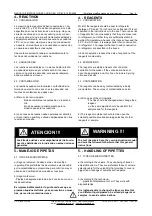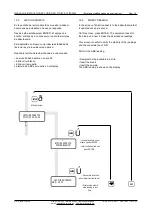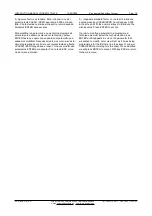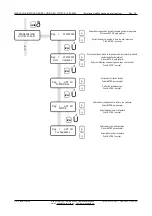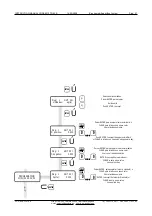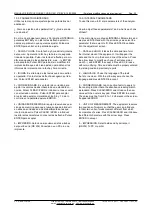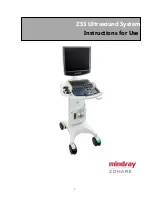
J.P. SELECTA
, s.a.
Ctra. NII Km 585.1 Abrera 08630 (Barcelona) España
Tel 34 93 770 08 77 Fax 34 93 770 23 62
e-mail: [email protected] - http://www.jpselecta.es
INSTRUCTION MANUAL CODE 80137 REV B
14/03/2008
(Can be modi
fi
ed without notice)
Pag.: 7
-Pipetas de émbolo con desplazamiento positivo. Son
pipetas que tienen la punta
fi
ja y por tanto hay que tener
mucha precaución.
Para evitar contaminaciones hay que lavar la pipeta
por lo menos tres veces con agua destilada y des-
echar entre dos líquidos pipeteados.
6.
TÉCNICAS DE ANÁLISIS Y
MÉTODOS DE CALCULO.
6.1. TIPOS DE TECNICAS
Los principales tipos de técnicas que se utilizan para
analizar muestras son: PUNTO FNAL, DIFERENCIAL,
CINETICA y MULTIESTANDARD. Las tres primeras pue-
den ser de cálculo por factor o por estandard, con lo cual
podemos clasi
fi
carlas en estos grupos:
PUNTO FINAL
FACTOR
PUNTO FINAL
ESTANDARD
DIFERENCIAL
FACTOR
DIFERENCIAL
ESTANDARD
CINETICA
FACTOR
CINETICA
ESTANDARD
MULTIESTANDARD
En las técnicas de PUNTO FINAL se obtiene la con-
centración de una determinada muestra multiplicando
la absorbancia a una longitud de onda por un factor de
proporcionalidad .
En ocasiones conocemos este factor (Cálculo por
FACTOR), otras veces tenemos una muestra estandard
y lo que conocemos es su concentración (Cálculo por
ESTANDARD)
Las formulas a aplicar son las siguientes:
FACTOR
ESTANDARD
En las técnicas DIFERENCIALES se obtienen el valor
de la concentración multiplicando la diferencia entre la
absorbancia de una muestra y la de un patrón (blanco de
muestra) por un factor de proporcionalidad.
Como en el caso anterior podemos conocemos este
factor (Cálculo por FACTOR) o la concentración de un
estandard (Cálculo por ESTANDARD)
Las formulas a aplicar son las siguientes:
FACTOR
ESTANDARD
C
concentración de la muestra
ABSm
absorbancia de la muestra
ABSb
absorbancia del blanco de muestra
F
factor de proporcionalidad
ABSstd absorbancia del estandard
ABSbstd absorbancia del blanco de estandard
Cstd
concentración del estandard
ABSm
x Cstd
ABSstd
C =
C = ABSm x F.
C = ( ABSb - ABSm ) x F
C =
ABSbstd - ABSstd
x Cstd
ABSb - ABSm
- Piston Pipettes with positive displacement.
They are pipettes that have the end cap
fi
xed and
therefore is necessary to have much precaution.
In order to avoid contaminations it is necessary to
wash the pipette at least three times with distilled
water and reject between two pippette usages
6. TYPES OF TECHNIQUES AND
CALCULATIONS METHODS
6.1. TECHNIQUES TYPES
The main types of techniques that are used to analyze
samples are: END POINT
, DIFFERENTIAL, KINETICS
and MULTIESTANDARD.The three
fi
rst can be of
calculation by factor or standard, with which we can
classify them in these groups:
END POINT
FACTOR
END POINT
STANDARD
DIFFERENTIAL FACTOR
DIFFERENTIAL STANDARD
KINETICS
FACTOR
KINETICS
STANDARD
MULTIESTANDARD
In the”end point” techniques the concentration of a
certain sample is obtained multiplying the absorbance at
a wavelength by a factor.
Sometimes we know this factor (Calculation by
FACTOR), other times we have a standard sample and
what we know it is his concentration (Calculation by
STANDARD)
The used expresions are the following ones:
FACTOR
STANDARD
In the DIFFERENTIALS technniques the concentration
values yields from multiplying the difference between the
absorbance of a sample and the one of a standard (blank
of sample) by a proportionality factor.
As in the previous case we can we know this factor
(Calculation by FACTOR) or the concentration a standard
one (Calculation by STANDARD)
The applied expresions are the following ones:
FACTOR
STANDARD
C
sample concentration.
ABSm
sample absorbance.
ABSb
blank sample absorbance.
F
proportionality factor.
ABSstd standard absorbance.
ABSbstd
standard blank absorbance.
Cstd
Standard concentration.
C =
ABSbstd - ABSstd
x Cstd
ABSb - ABSm
C = ( ABSb - ABSm ) x F
ABSm
x Cstd
ABSstd
C =
C = ABSm x F.






